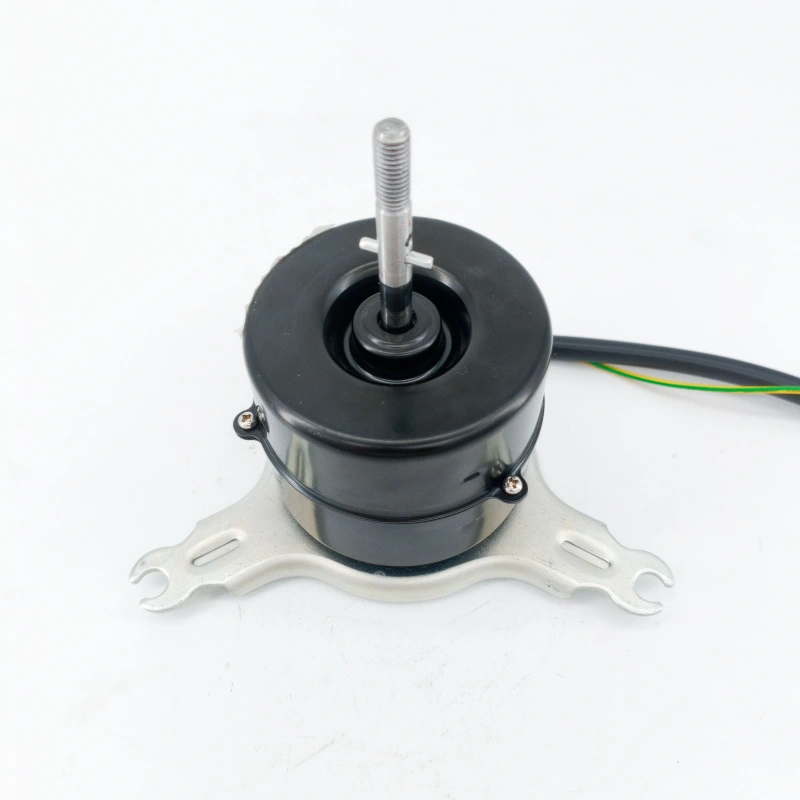As the core component driving the operation of compressors and fans, the operating status of air conditioner motors directly determines whether the air conditioner can work normally. Problems such as frequent shutdowns, difficult startup, and abnormal noise are indeed related to motor failures in more than 60% of cases, but they may also be caused by abnormal coordination between the motor and other components. Mastering basic troubleshooting methods allows ordinary users to quickly identify the direction of the problem, avoiding unnecessary maintenance costs. Scientific daily maintenance can even extend the motor’s service life from 5-8 years to more than 10 years, further reducing repair expenses.
I. Core Manifestations of Motor-Related Faults and Preliminary Troubleshooting
Motor faults have distinct characteristics, and users can make preliminary judgments through the three-step method of “observation, listening, and touching”:
1. Frequent Shutdowns and Difficult Startup: If the air conditioner shuts down shortly after startup and fault codes such as “E1-E5” appear on the display (the meaning of codes varies by brand, please refer to the manual), it is most likely due to the motor’s overheat protection. In this case, turn off the air conditioner first and check if the cooling fan of the outdoor unit is running. If the fan does not run, the problem may lie in stuck motor bearings or a damaged capacitor. If the fan runs normally, check if the filter and evaporator are heavily contaminated with dust, as poor heat dissipation caused by this can indirectly lead to motor overheating. Difficult startup is mostly caused by the aging of the motor’s starting capacitor, which is characterized by a “buzzing” sound from the motor without rotation when turned on. In such cases, cut off the power and contact maintenance personnel to replace the capacitor; do not force startup to avoid burning the motor.
2. Abnormal Noise: Noises caused by motor problems have obvious differences. A “clicking” mechanical impact sound may indicate friction between the motor rotor and the housing, mostly due to loose fixing screws. A “squealing” high-frequency noise is usually caused by worn and under-lubricated bearings, which require timely lubrication. A dull “buzzing” noise may be a sign of partial short-circuit in the motor coil; in this case, shut down the unit immediately to prevent the fault from worsening. During troubleshooting, when the air conditioner is running, place one end of a screwdriver against the motor housing and the other end against your ear. If the noise clearly originates from inside the motor, the problem can be basically confirmed.
It should be noted that some users may confuse motor noise with airflow noise. The latter is mostly a “whooshing” wind sound, which can be alleviated by cleaning the filter, while motor noise is mostly mechanical or electromagnetic and requires targeted treatment.
II. Daily Maintenance Tips to Extend Motor Service Life
1. Regular Cleaning to Ensure Heat Dissipation: This is the core maintenance measure. For the indoor unit, clean the filter every 2-3 weeks to prevent dust blockage from causing poor heat dissipation of the evaporator, which indirectly leads to motor overheating. For the outdoor unit, clean the heat sink once a month. You can use a high-pressure water gun (adjusted to low-pressure mode) to rinse from the front to remove dust, catkins, and other debris, ensuring that the airflow driven by the fan can effectively cool the motor. Especially in high-temperature summer and catkin-filled spring, the cleaning frequency should be increased.
Motor faults are mostly related to “overheating, dust accumulation, and wear and tear”. Daily maintenance should focus on these three aspects, with simple operations and significant effects:
2. Standardized Use to Reduce Wear and Tear: Avoid prolonged “high-frequency operation” of the air conditioner, such as setting an excessively large temperature difference between indoor and outdoor (it is recommended to set the temperature no lower than 26°C in summer and no higher than 20°C in winter) to reduce the number of motor starts/stops and its load. Turn off the air conditioner and unplug the power supply during thunderstorms to prevent lightning from breaking down the motor coil through the circuit. When the air conditioner is not in use for a long time (such as during seasonal changes), turn on the air supply mode and run it for 1-2 hours first to dry the motor and internal components, preventing coil rust caused by moisture.
3. Regular “Activation” and Professional Inspection: For air conditioners that have been idle for a long time, turn them on and run for 10-15 minutes every month to lubricate the motor bearings and prevent oil solidification from causing jamming. For air conditioners used for more than 3 years, it is recommended to invite professional personnel to conduct on-site maintenance every year, including lubricating the motor bearings, checking the capacitor capacity and coil insulation, and replacing aging components in a timely manner to eliminate potential faults.
In conclusion, air conditioner motor faults are not sudden; they are mostly caused by long-term neglect of maintenance or improper use. By using the “observation, listening, and touching” method for preliminary troubleshooting and combining maintenance measures such as regular cleaning and standardized use, ordinary users can not only reduce the probability of faults but also extend the motor’s service life. If core faults such as motor coil short-circuit or severe bearing wear are confirmed after troubleshooting, do not disassemble and repair by yourself. Contact the brand’s after-sales service or professional technicians to ensure the safety and effectiveness of the repair.




